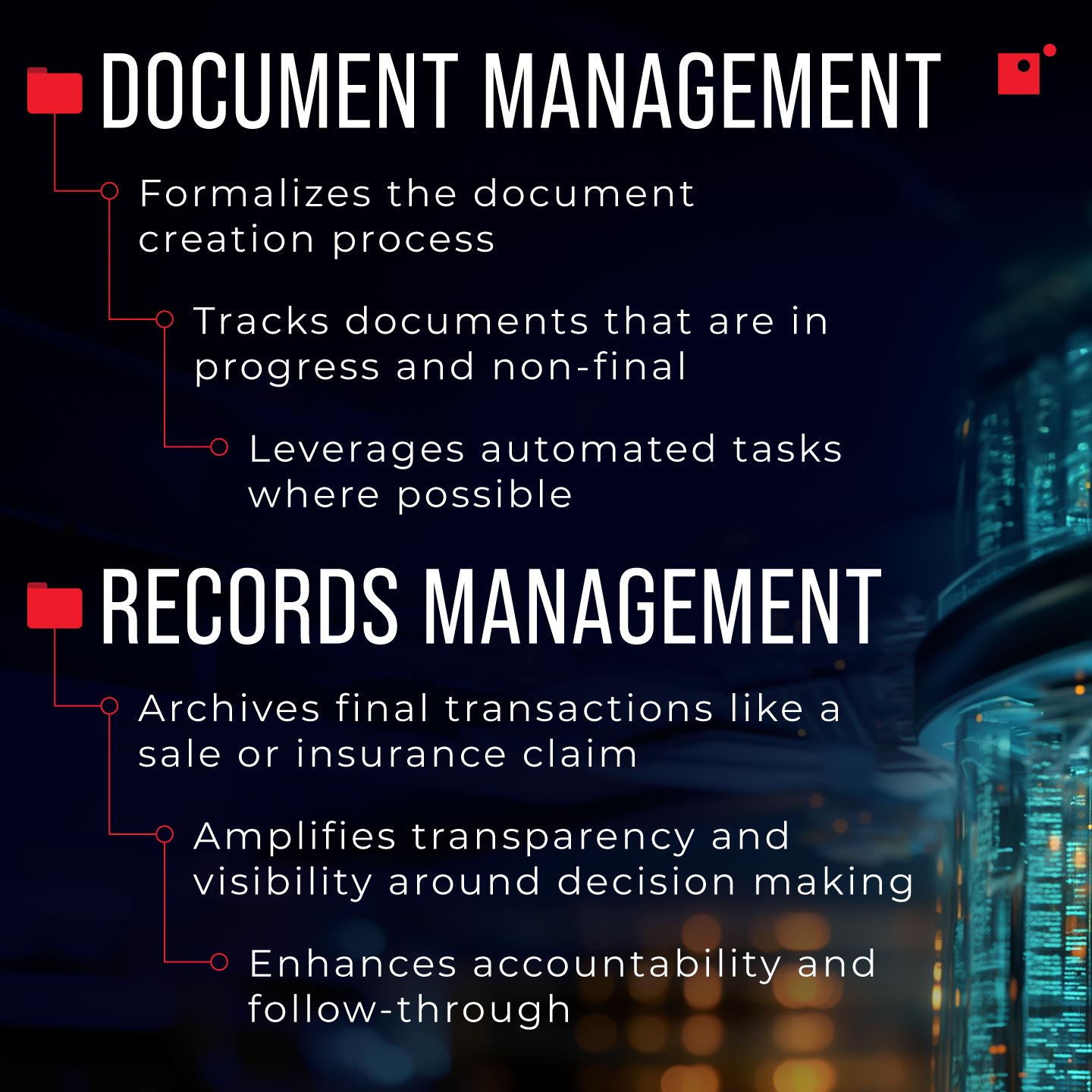Everyone has their own style of organization that works for them. Similarly, your business needs to have processes in place to stay organized and keep track of all the different documents in creation and the various transactions that occur. When it comes to this type of organization, it’s important to know the differences between document management vs records management and the benefits of each.
In short, document management is all about tracking company documents that are in progress. Records management, on the other hand, archives final transactions like payments and partnerships.
Join us below to explore the ins and outs of both document management and records management, the benefits they bring to any business, and how they work in concert to give you ultimate visibility into the lifecycle of documents and records.
The beautiful thing about technology is how customizable it is. This is what makes technology-fueled solutions so appealing to leaders and decision makers facing everyday obstacles. For additional insight into solving problems with tech watch Impact’s webinar, How Managed Digital Transformation Solves Real Challenges: An Inside Look!
What Is Document Management?
Document management refers to the systematic process of organizing, storing, retrieving, and controlling documents within an organization or individual setting. It involves a range of practices and technologies designed to handle both digital and physical documents throughout their entire lifecycle, from creation and editing to archiving and eventual disposal.
The primary goal of document management is to improve efficiency, accessibility, and security while ensuring compliance with legal and regulatory requirements.
At its core, document management involves categorizing and indexing documents so they can be easily found and used when needed. This often includes creating a structured system of folders or tags, as well as implementing version control to track changes and revisions over time.
In a digital context, document management systems provide software tools that facilitate these tasks, allowing users to search for and retrieve documents quickly using metadata, keywords, or a full-text search.
Security is also a critical aspect of document management. Proper document management ensures that sensitive information is protected from unauthorized access through access controls, encryption, and audit trails.
Additionally, a good document management system helps organizations comply with legal standards and industry regulations by maintaining accurate records, managing document retention schedules, and ensuring the authenticity of stored documents. This not only minimizes the risk of data breaches but also supports legal defensibility and operational continuity.
What Is Records Management?
Records are documents or data that serve as evidence of transactions, decisions, or actions and must be preserved for legal, regulatory, operational, or historical purposes. The primary goal of records management is to ensure that records are accurately maintained, accessible when needed, and disposed of appropriately when they are no longer required.
Effective records management involves several key activities. First, it includes the classification and indexing of records to ensure they are organized in a way that allows for easy retrieval. This might involve assigning records to specific categories based on their content, function, or importance.
Next, records management includes setting retention schedules, which dictate how long different types of records should be kept before they can be archived or destroyed. These schedules are often guided by legal requirements, industry regulations, or organizational policies.
Even more than in document management, security and compliance are critical components of records management. Organizations must protect records from unauthorized access, loss, or tampering to maintain the integrity and confidentiality of the information they contain. This involves implementing security measures such as access controls, encryption, and audit trails.
Compliance with legal and regulatory requirements is also essential, as organizations must ensure that records are kept and disposed of in accordance with relevant laws and standards. Proper records management not only supports efficient operations but also reduces legal risks, enhances accountability, and preserves organizational memory.
Reviewing The Key Differences Between Document and Records Management
Document management and records management are related but serve distinct purposes within an organization, differing in focus, processes, and information handling throughout its lifecycle.




